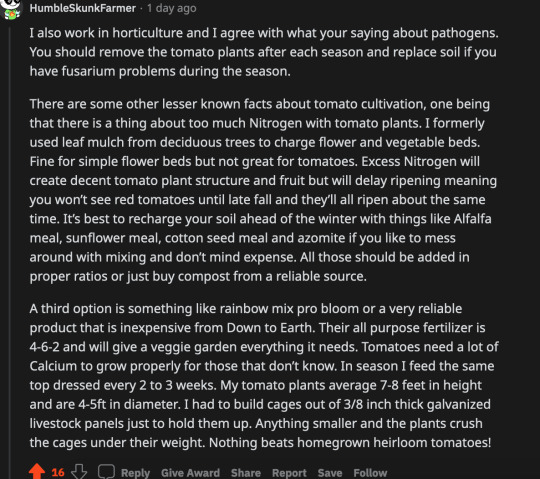Text

1929 "The Modern Electric House" at 925 South Crescent, Park Ridge, Illinois was fully furnished when built and used as a raffle prize at the end of the house tour by a local American Legion post. It was designed by architect Charles Rawson.
375 notes
·
View notes
Video
youtube
Just bowled over by how beautiful, relaxing and educational this guy’s videos are. This time he teaches us how to make a ‘wormville’ using a discarded bathtub and different kinds of organic matter. It’s filmed, edited and soundtracked in such a lovely way. Unless you have a fear of worms, which is perfectly fine, this would be a nice thing to unwind to at the end of a long day
1 note
·
View note
Text
Didn’t know about the usefulness of worm juice, and no, you don’t have to kill any for it!
12 notes
·
View notes
Text
These tubers may germinate and grow along transportation routes and in areas surrounding storage and processing facilities. However, the environmental conditions in Malaysia is not suitable for growth and successful perpetuation of potatoes.

0 notes
Photo

Saw this tomato-growing advice on the gardening reddit and it was vouched for by another horticulturist with quite a bit of academic experience. I wonder if we can use this for the tomatoes on the farm. Maybe our weather is just too hot for them
0 notes
Link
Saw somebody on the permaculture reddit recommending an eco-friendly detergent recipe made with this noxious weed. Do these grow round where you live? Have you tried making this with them before? Feel free to let me know.
Preparation Time: 25min
Total time: about 14 hours
Makes enough for 6 loads of laundry.
Materials and ingredients:
60 English ivy leaves (Hedera helix) 4.5 cups of water Gloves (for people with sensitive skin) A foraging basket Large pan A tea filter or cheesecloth Vinegar (optional)
Steps*:
* See instructional video below as a visual aid!
1. Go foraging for English ivy (Hedera helix)!
o If you live in Europe, western Asia or the United States, you’ll likely find the vine growing on a tree in the forest or covering the walls of a house in your neighborhood. English ivy is invasive in the United States and is classified as a noxious weed. If you’re unsure how to identify it properly, you can use a plant guide for help. (It’s important that you are 100% certain in your identification. To be clear, I am not talking about poison ivy…)
2. Put your gloves on and collect the leaves.
o The sap from the English ivy can cause skin irritations. Wearing gloves is a preventative measure in case you have sensitive skin.
o Collect 60 English ivy leaves and place them in your foraging basket or bag.
3. Make a decoction.
o Once home, rinse and scrunch the leaves in your hands – leave the gloves on if you have sensitive skin.
o Put the leaves in a pan and add 4.5 cups of water.
o Put the pan on your stove and bring the water to a boil. Let it boil for 15 minutes.
4. Wait and filter.
o Let the ivy tea cool for about half a day.
o Then, squeeze the leaves by hand (with gloves) so that their juices drip out into the tea. Discard the leaves into your compost pile.
o Filter the tea into a jar by using a tea filter or cheesecloth.
5. Wash your clothes!
o For each load of laundry, add ¾ cups of this tea. This recipe makes enough for about 3 loads of laundry.
6. Extend the life of the detergent.
o To make your English ivy laundry detergent keep longer, store it in your fridge or add a little bit of vinegar to it (at a 1:5 ratio).
The English ivy laundry detergent is perfect for wool clothes and delicates! What it isn’t meant for is your children’s cloth diapers or clothes that are absolutely filthy and stained.
youtube
5 notes
·
View notes
Video
youtube
Great idea for a grey water filtration and repurposing system. Not my video or interview obviously, description has some links that might be useful for the curious. Here’s part of it:
In this episode, we return to Murray's tiny house on wheels in the Yarra Valley, Victoria, Australia, where he has set up a clever grey water treatment system for his home based on permaculture principles.
Become a Living Big Patron: https://www.patreon.com/livingbig
Grey Water Treatment is really important, but there isn't a lot of information out there about these systems, especially for off-the-grid tiny homes like this one. In this video, we go into detail about how the system works, and how it was built giving you all the information to tackle the task yourself should you with to build one.
Murray's system is affordable, easy to set up and can be done as a DIY project. The clean water which comes from the micro-wetland is then used in a series of wicking garden beds for growing organic food.
2 notes
·
View notes